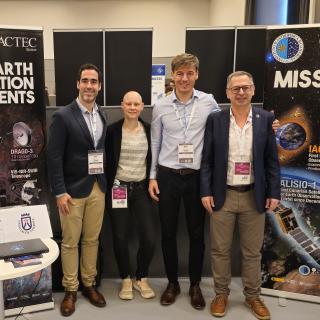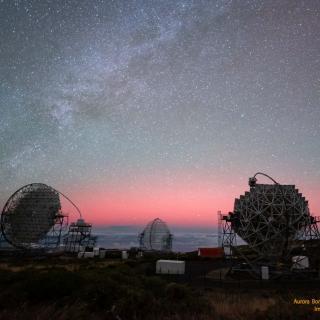Following the announcement by the ESO Council that it has chosen Cerro de Armazones as the "reference location" for the European Extremely Large Telescope (E-ELT), the Instituto de Astrofísica de Canarias has confirmed its view, based on the analysis of the publically available scientific data and test results, that the Observatorio del Roque de los Muchachos (ORM), in the Island of La Palma, is the best site for the telescope.
The ESO Council's announcement makes it much more difficult for Spain's candidate location, the Roque de los Muchachos (Island of La Palma) to finally be chosen, even though it is not only the ideal site but it would allow construction of the E-ELT to begin without delay. The Spanish Government (Ministry of Science and Innovation) and the Government of the Canaries have made this clear on several occasions.
The IAC would like to thank the many public and private institutions at local, regional, national and international levels, which have supported it in its task of promoting the Spanish candidate location. We especially thank the people of La Palma, and Canarias in general, for the public outpouring of support that this objective has received.
The IAC remains convinced that this telescope is a much needed and urgent step forward for European astrophysics and that is why, since the telescope's inception, the IAC has been one of the institutes of astronomy that have worked most closely with ESO on several of the project studies that have been carried out. The IAC has also worked hard to promote a high level of participation on the part of Spanish industry.
The IAC has done everything it can to demonstrate the scientific and technical strength of the Spanish proposal and will continue to collaborate with this effort until the end. Moreover, it will not allow the Canaries' famed reputation as a top quality location for astronomy to be damaged by this selection process.
It is important to note that the only known, open and available information on the sky above Armazones comes from studies carried out by the American team that worked on the Thirty Meter Telescope (TMT) site selection. That data was gathered over a period of barely four years and the team ultimately recommended Hawaii. When the publically available data from Armazones is compared with the Roque de los Muchachos statistics, the latter is shown to be highly competitive in accordance with the technical specifications and scientific objectives of the new telescope. The slightly lower number of clear nights at the ORM is clearly outweighed by the better atmospheric conditions for Adaptive Optics. Also the absence of seismic movements in Canarias is a critical aspect. Siting the E-ELT at ORM would not only enable the telescope to operate to its full capacity, it would also simplify its design and lower the construction and operation costs.
While it is true that the ESO Council is sovereign over its choice of site for the telescope, however it should follow the universal scientific convention by publishing to the scientific community the data on which its decision is based, so that it can be examined before an irreversible decision is taken.
The summits of the Canaries have been used as a reference site for atmospheric studies since the end of the 19th century. The IAC's observatories, in particular the Roque de los Muchachos, have as good astronomical characteristics as any site in the world and over 20 years worth of data have been published confirming this. The observatories have been used for over 40 years to carry out permanent astronomical observation, with the telescopes and instruments of over 60 scientific institutions from 19 different countries. All of this means that the Canarian Observatories are the largest European observatory in the Northern Hemisphere.
The observatories have also been a key driver for the spectacular development of Astrophysics in Spain. They are a multipurpose observation platform, which is open and very accessible and has a stable, well known and predictable atmosphere. The astronomical quality of their skies is protected by law. They are a unique resource for science that cannot be disparaged.


